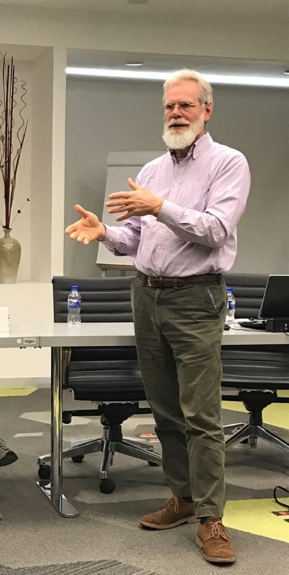
EL BATAN, Mexico (CIMMYT) – More than 60 percent of the population in developing countries is below the age of 25, a demographic that is projected to grow. In Sub-Saharan Africa alone, the number of young people is expected to triple by 2050.
Despite large numbers of youth, farmers worldwide are an average age of about 60 as young people are being pushed out of their rural homes, due to factors like lack of access to land or credit. This is causing a dangerous trend that could result in a shortage of farmers in the coming decades, just as global food demand is projected to increase 70 percent by 2050.
However, when given the opportunity and access to resources, young men and women often prefer to stay in their rural homes and have proven to be more likely to adopt the new technologies needed to sustainably increase agricultural productivity than older farmers.
In an effort to address this age disparity and encourage young people to get involved in farming, youth in agriculture experts are developing a new framework with the International Maize and Wheat Improvement Center (CIMMYT) that aims to help boost interest in research on maize and wheat farming systems.
Youth in agriculture experts from the Institute of Development studies (IDS), the Royal Tropical Institute (KIT) and the Young Professionals for Agricultural Development (YPARD) visited CIMMYT headquarters near Mexico City to discuss prospects and implications for maize and wheat farming systems – building on efforts to produce a collaborative draft framing paper by IDS with the CGIAR Research Programs MAIZE and WHEAT to help think about how both programs want to engage with youth as part of their research agendas.

In some situations young people are resorting to occupations other than farming due to lack of land or employment options in rural areas, according to Jim Sumberg, research fellow at IDS and an agriculturalist with over 25 years’ experience working on small-scale farming systems and agricultural research policy.
The response of agricultural research should not just be simply to make youth another target group, Sumberg said.
“We want to develop a more nuanced story, particularly in relation to the interests of MAIZE and WHEAT, and how these align with the interests and capabilities of different groups of young people – men and women, rich and poor, better and less well educated,” Sumberg said.
However, Sumberg cautioned against youth becoming just another box for donors to tick.
“There is a real danger that if we identify young people as a separate target group, as has been done before with women,” Sumberg said. “For each new box you put people in, you are chopping up rural society into separate pieces, as if youth aren’t related to the adults, older people and kids. But in fact everyone is embedded in social relations and networks and are connected to each other.”
What young people do economically, what they’re able to do both in farming and other occupations, has a lot to do with the nature of those relationships.
You need to consider questions like “Does a son or daughter receive land from a father or uncle? Does a wife lend money to her husband to start a business? If you only think in terms of isolate groups, you’re not getting the full picture,” he said.
Sumberg believes that we are early enough in youth involvement in agricultural research that we can avoid the mistake of making them a distinct and separate target. The real challenge is to work our way back to a more holistic image of rural society, which includes understanding the dynamic relationships between individuals and groups in each context in which we operate.
“It’s a great challenge, but the benefits are huge if we can pull this off,” Sumberg said.
The collaborative framing paper on youth for MAIZE and WHEAT will be published in 2017.
 Capacity development
Capacity development